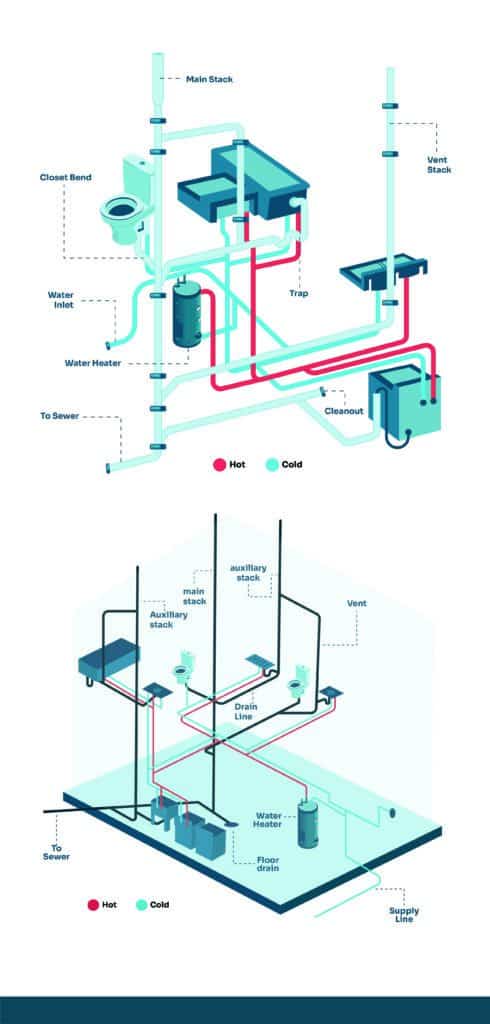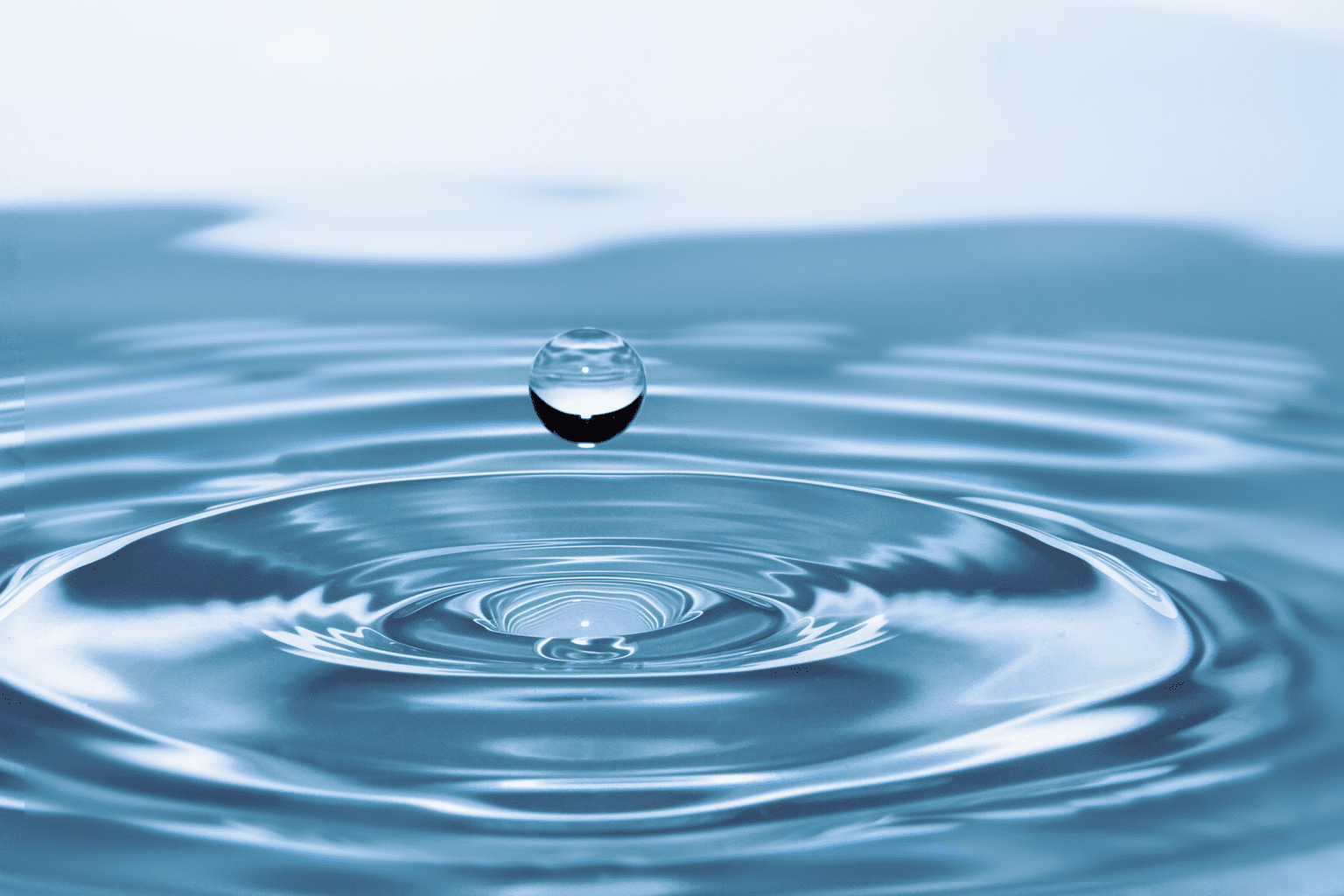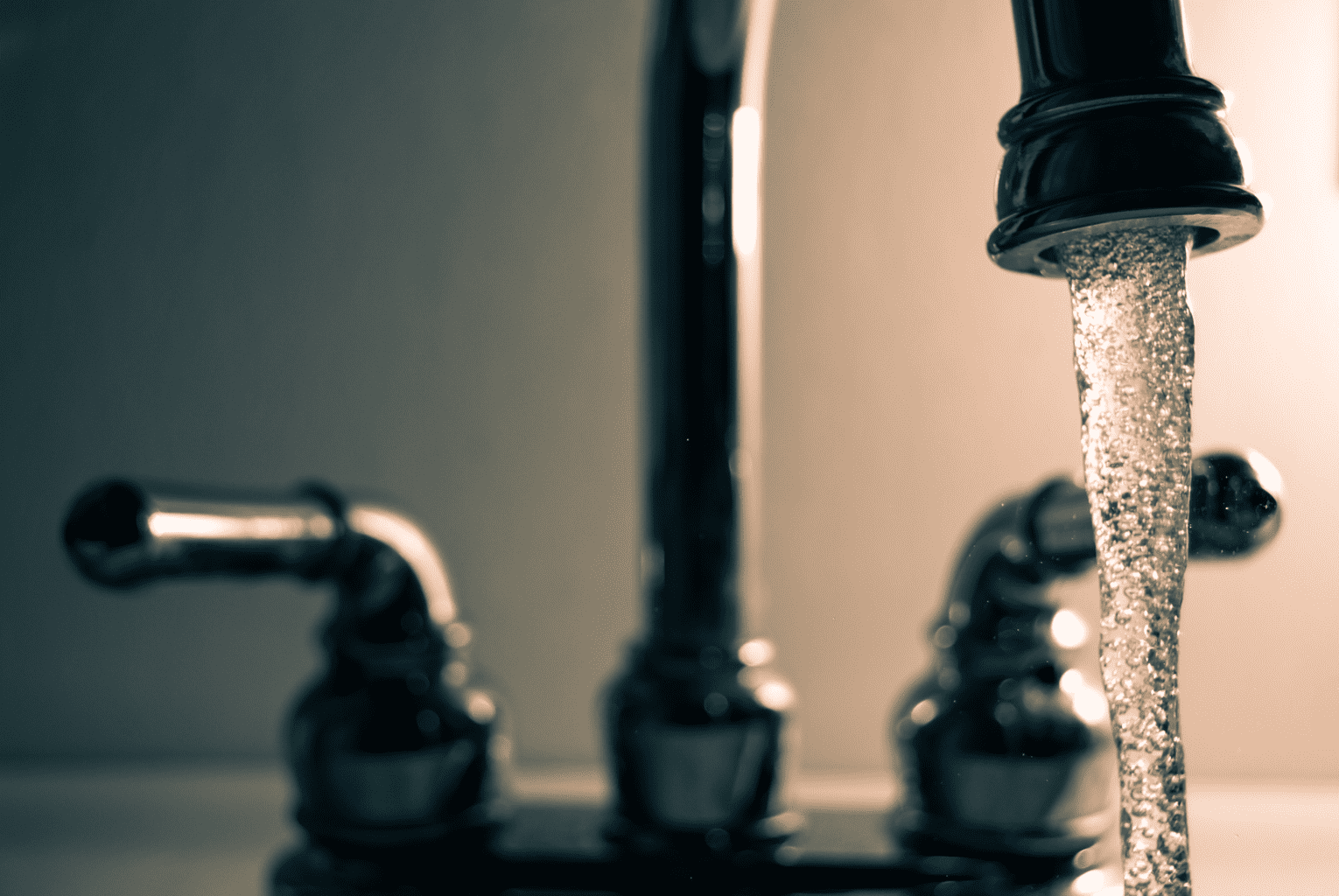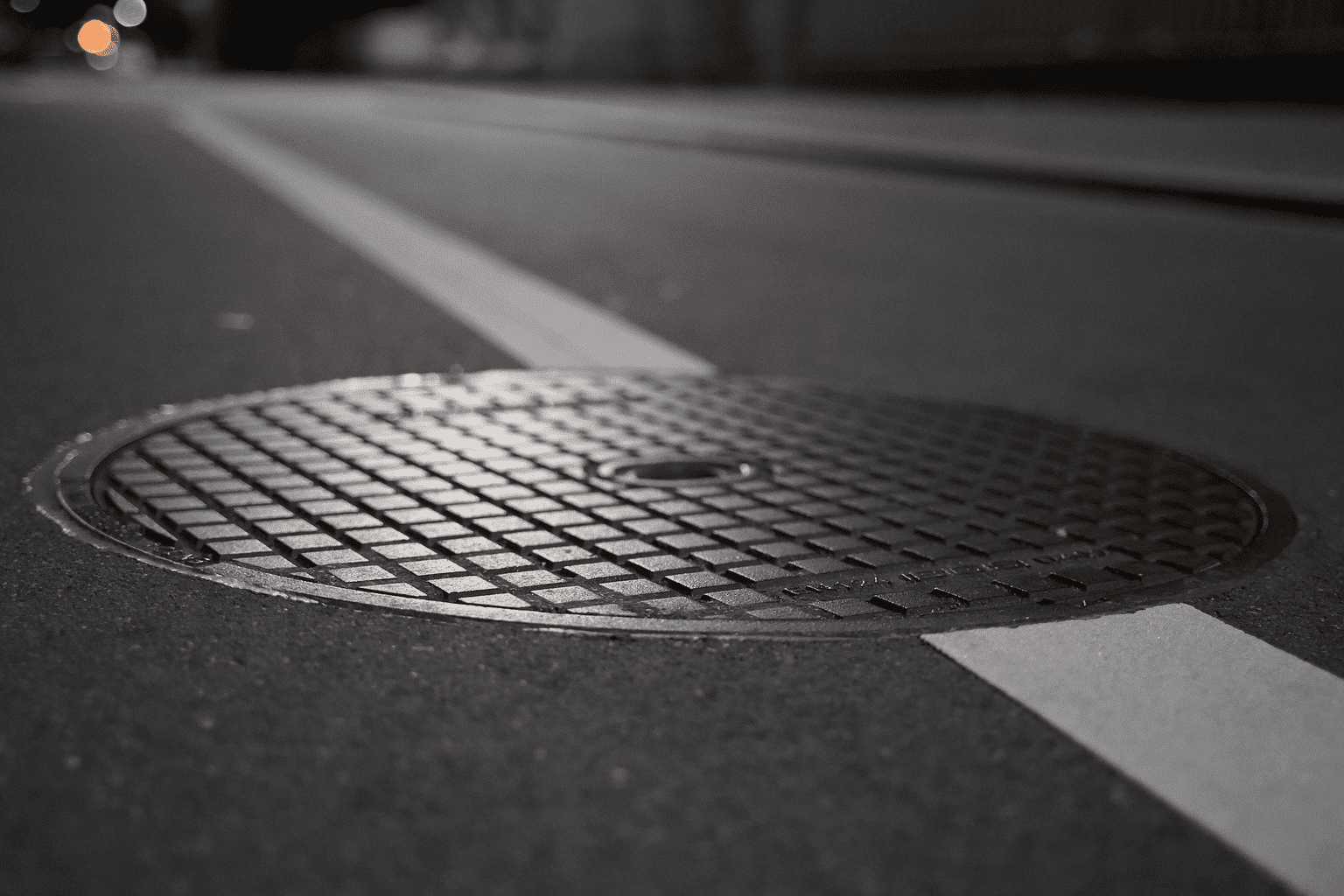Every home has two basic plumbing systems; one that provides clean water and another that gets dirty water out of your home. These plumbing systems meet in the middle by your showers, sinks, toilets, faucets, and appliances such as dishwashers or washing machines.

When clean water enters your house plumbing, it divides into two systems:
A hot water system
A cold water system
Similarly, your wastewater network also has two plumbing systems; one constructed out of pipes that get the water out and the venting pipes that prevent the sewer gas to get inside your home.
When connected, all of these components make the plumbing system that allows your home’s water supply to flow correctly.
Keep reading if you need an answer about how your home plumbing diagram looks and functions or if you’d simply like to expand your knowledge about it.
How Do Home Plumbing Systems Function?
It’s essential to have a proper plumbing system and to know how the system works. That way, in case of a plumbing mishap, you’ll be able to react and fix the issue or at least prevent more damage until you reach a plumber.
As toilets, fixtures, appliances, and bathrooms, in general, are all about plumbing, it won’t hurt to know more about plumbing systems.
To help you better understand the plumbing diagram of your home, we will describe each component that’s significant for your plumbing system.
The Fresh Water Supply
How Does Clean Water Access Your Home?
Clean water goes into your home through one pipe; people typically call this pipe the service line, while it’s also known as the main water supply line. This is the largest pipe in the supply network, but its size can vary depending on your exact system.
As they get closer to your fixtures, the pipes become smaller in diameter, ensuring that the water supply has enough pressure for multiple working fixtures.

Your fresh water supply could come from two different sources:
From the city’s community system
From a well, river, or nearby pond
The Water Pressure and Flow
To move through your pipes, the water needs a slight push; city community systems typically pump water from tall water towers, while the systems on personal properties get pressure from a pump from the well or river.
As cities have higher municipal water supplies and need to push more water, their pump is more efficient. It allows gravity to help push the water out to the nearby areas.
When it comes to your house plumbing, your home relies on the pressure from the incoming water supply. If it’s too low, the water won’t flow. Similarly, if it’s too high, it can create loud noises and put stress on joints between the pipes.
Hot Water Supply VS Cold Water Supply
Every home has a hot water supply and a cold water supply. They function differently, so read more about them below.

Cold Water Supply
The cold water supply goes straight from the main water line supply to every fixture inside your house. The fixtures group central column on every floor. Because of that, this system is efficient and has a smooth flow.
If your plumbing is more twirled than it should be, your water flow could become restricted.
Hot Water Supply
The plumbing pipes are especially important when it comes to the supply of hot water to your home. They should be as straight as possible; more pipes means more heat will get lost while the water travels through them.
Typically the water will get hot by:
Using a hot water tank
Using a water heater
If using a water heater, try to adjust the temperature to a medium to prevent wasting energy.
The Water Waste System
The water waste system functions in such a way that the drain waste pipes take the dirty wastewater away from your home. These pipes become larger as they get further from your fixtures.

That’s because bigger pipes allow multiple people to use their bathrooms by flushing a toilet, using faucets, or taking showers. The main pipe that connects your water waste system to the city’s sewage waste system is typically called the sewer lateral.
Even if your hour home plumbing system works properly, it can block due to the hair, dirt, and debris that enter it over time.
The Sewer Gas Venting
The Traps
If you look beneath your sinks, you’ll notice pipes with a u-shaped bend, the so-called traps. The shape of that pipe is essential to prevent the sewer gas from accessing your home by staying full of water.
The sewer gas is dangerous and smelly, so it’s necessary to ensure this pipe functions properly to prevent the sewer gas to access your plumbing.
The Venting Pipes
To function correctly, every home’s plumbing system needs to breathe, so almost every home has venting pipes passing through its roof. That way, the pipes prevent forming of a vacuum.
Without the venting pipes, the traps in your plumbing system wouldn’t be able to function adequately. That’s why a home needs air pipes that will vent through the roof. Because of that, you need to have a vent pipe anywhere you have a trap.
Conclusion
As a homeowner, you should know how your plumbing functions, including details like the ways you get fresh water and release wastewater. If there’s ever a problem with the plumbing in your home, you’ll likely need to call a plumber. However, it’s still good to know what could be wrong with your plumbing, as you might be able to resolve the issue by yourself.
